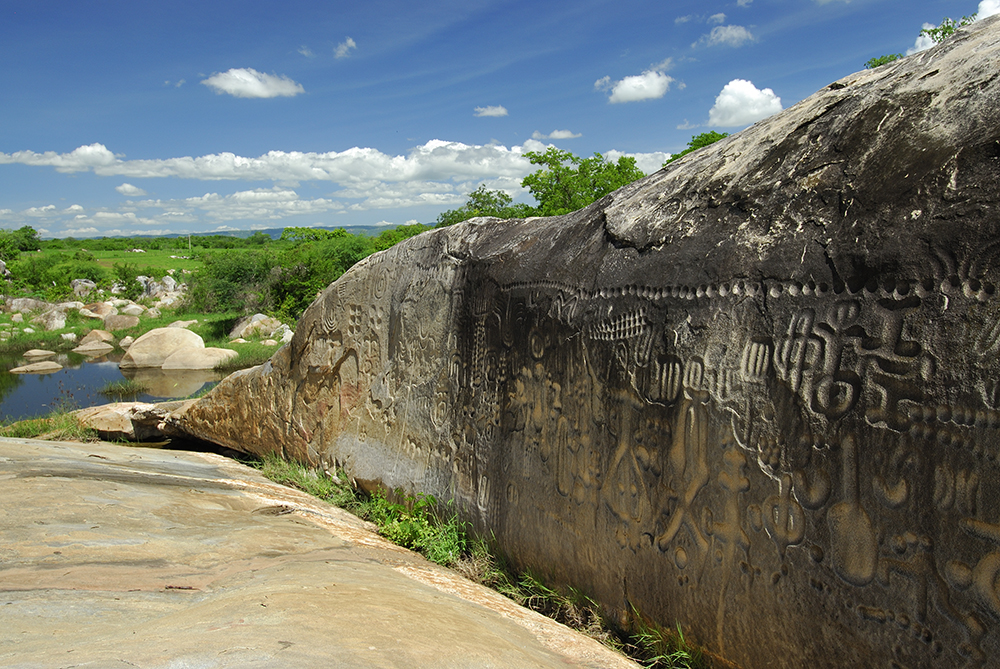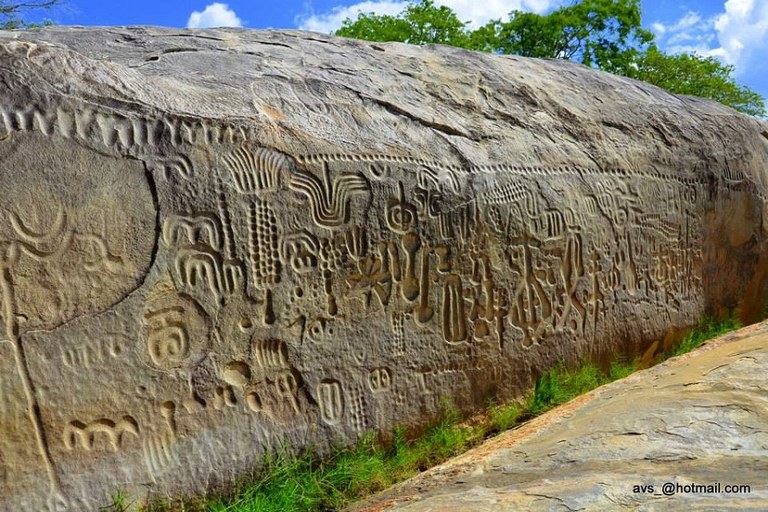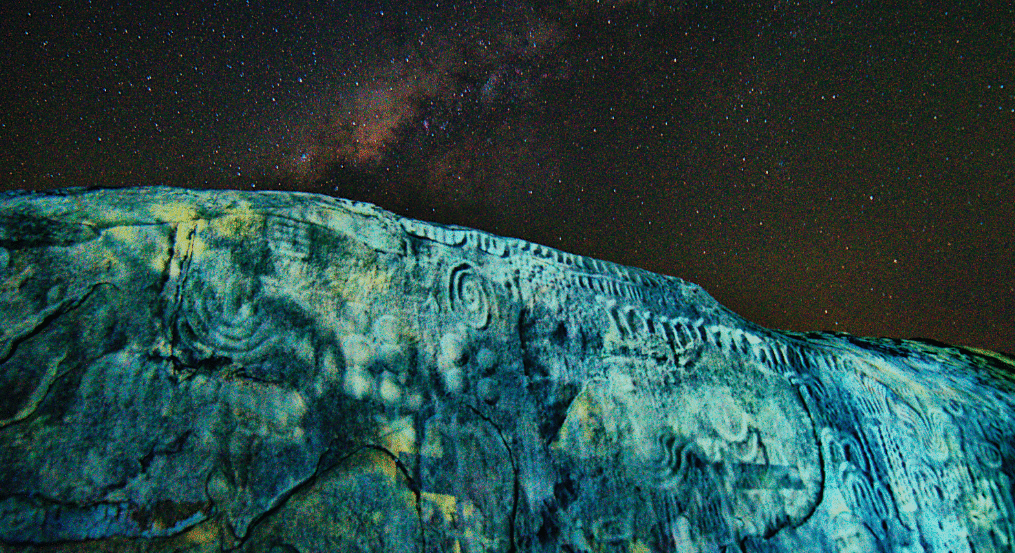The Pedra do Ingá, also known as Inga Stone, is a fascinating archaeological site that continues to captivate researchers and enthusiasts alike.
Located near the Ingá River in Paraíba State, northeastern Brazil, this remarkable rock formation echos the ingenuity and astronomical knowledge of ancient cultures.
The site consists of a gneiss rock formation covering an area of approximately 250 square meters. The main feature is a vertical wall stretching 46 meters in length and reaching heights of up to 3.8 meters. This impressive canvas is adorned with over 400 intricate petroglyphs, carved into the rock surface with remarkable precision.

Dating of the site suggests that these carvings may be over 6,000 years old, placing their creation in the early Holocene period. This antiquity adds to the mystery surrounding the Pedra do Ingá, as it predates many other well-known archaeological sites in the Americas.
The symbols etched into the rock face are diverse and complex. They include representations of animals, fruits, and human figures, but it’s the astronomical motifs that have garnered the most attention from researchers. Many experts propose that several of these carvings depict constellations, star clusters, and even entire galaxies. The presence of what appears to be a representation of the Milky Way and the constellation Orion has led some archaeoastronomers to suggest that the ancient artists possessed a sophisticated understanding of celestial bodies and their movements.

One of the most intriguing aspects of the Pedra do Ingá is the level of detail and precision in the carvings. Created using only hand tools, the artistry displayed is remarkable for its time. The methods used to achieve such intricate designs remain a subject of ongoing research, with scholars attempting to reconstruct the techniques and tools that might have been employed.
Spanish engineer Francisco Pavía Alemany has conducted extensive studies on the site since 1976. His research has led to the identification of what he believes to be a solar calendar system among the petroglyphs. This hypothesis suggests that the ancient creators of the Pedra do Ingá not only observed celestial bodies but also used this knowledge for practical timekeeping purposes.
Further adding to the site’s significance, some researchers have noted similarities between certain symbols at Pedra do Ingá and those found in other ancient writing systems, such as Phoenician script or Egyptian hieroglyphs. While these comparisons remain speculative, they have fueled debates about possible cultural contacts or shared origins of symbolic representation across different parts of the ancient world.

The Pedra do Ingá was recognized for its historical and cultural importance in 1944 when it was designated a National Monument by the Brazilian government. Despite this protected status, the site faces ongoing challenges from both natural erosion and human activity. Efforts to preserve and study this unique archaeological treasure continue, with researchers employing advanced imaging techniques to document the petroglyphs in detail.
As investigations into the Pedra do Ingá progress, the site continues to raise intriguing questions about the capabilities and knowledge of ancient South American cultures. The complexity of the carvings challenges preconceptions about prehistoric societies in the region and suggests a level of astronomical understanding that was far more advanced than previously thought.

The Pedra do Ingá remains a source of wonder and scientific inquiry. As research continues, this enigmatic stone canvas may yet reveal more secrets about the astronomical knowledge, cultural practices, and technological capabilities of the people who left their mark on this remarkable site over six millennia ago.










